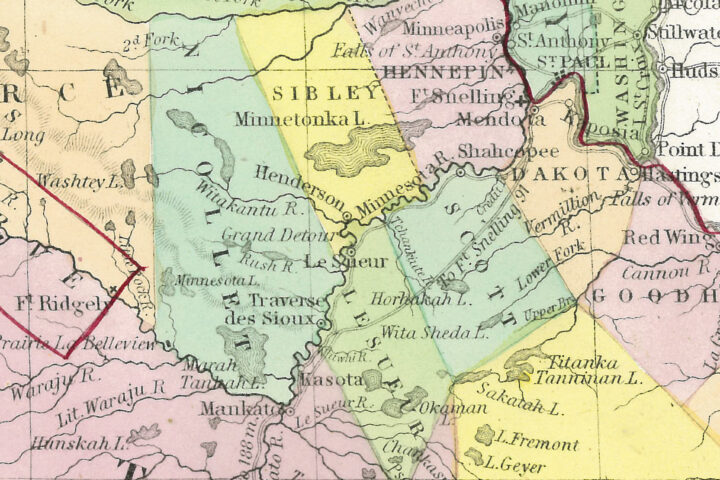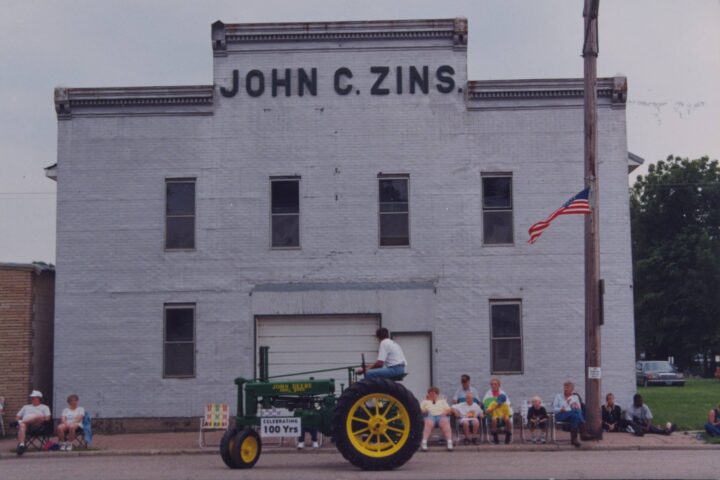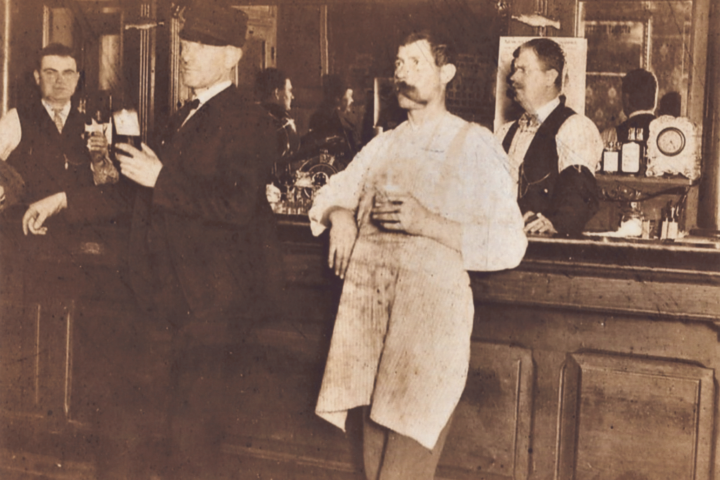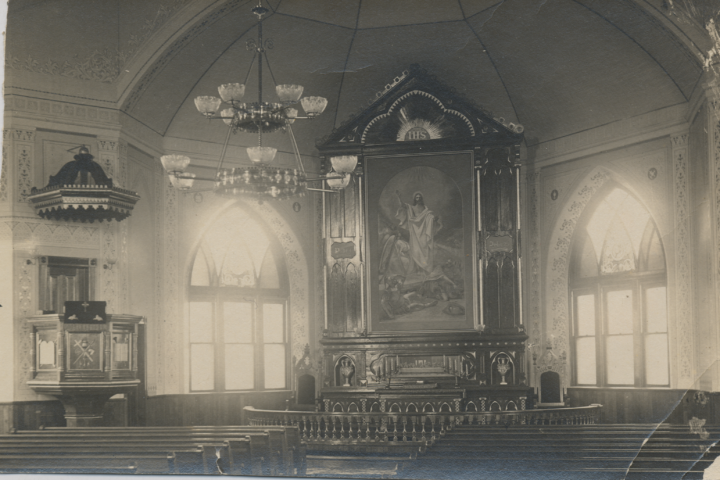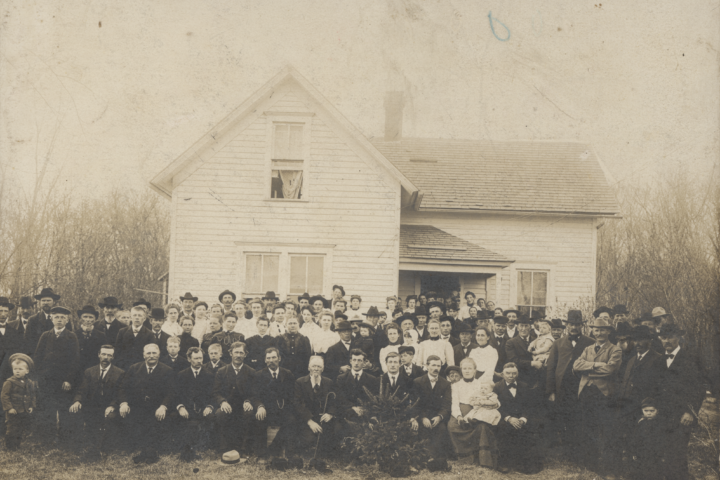Written by Bob Sandeen, NCHS Research Assistant
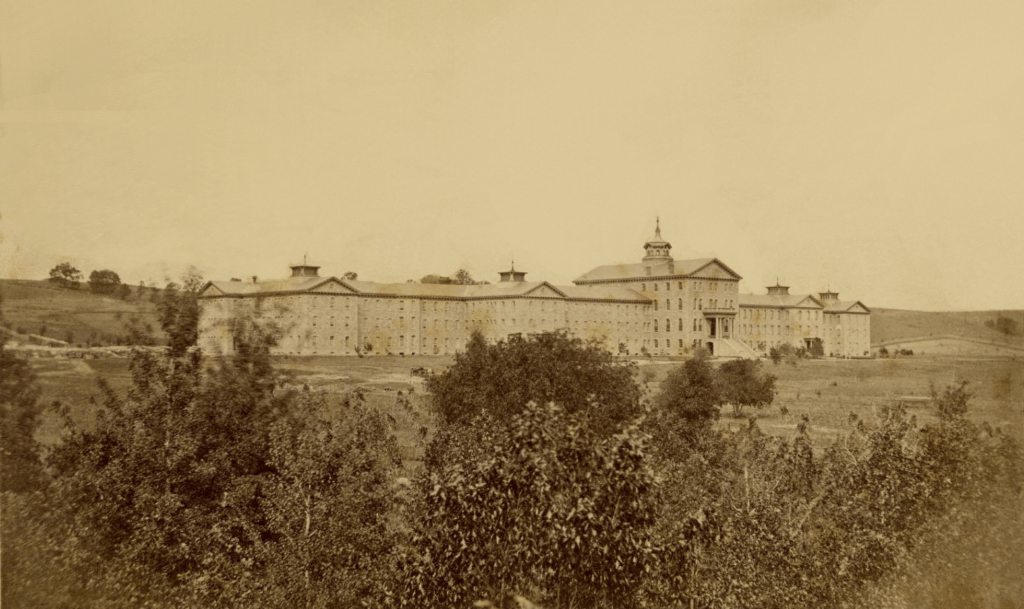
1880 Fire at the St. Peter State Hospital
Death came to more than a dozen men during the darkness of a cold November night in 1880. The men died in a fierce fire in the north wing of the St. Peter State Hospital.
The fire began in the basement at about 7:00 p.m. during the evening of November 15. The fire raged through the night and into the daylight hours of the next day.
A copy of the Saint Peter Tribune issue that should have described the fire has apparently not been preserved. However, the April 26, 1929 issue of the Saint Peter Herald contains a reprint of the fire’s story that had originally appeared in the Daily Saint Paul Pioneer Press on November 17, 1880. The old newspaper had been found “tucked away in an odd corner” at the State Hospital.
The correspondent who wrote the 1880 article left St. Paul at 1:30 a.m. on the 16th but did not arrive in Kasota Junction until 6:48 a.m. due to several frustrating railroad delays. He ate a hurried breakfast before taking a Winona & St. Peter Railroad train across the Minnesota River bridge to the hospital grounds. The fire was still burning.
The correspondent had high praise for the men of the St. Peter Fire Company, Union Number 1, and for the men of Mankato Engine Company Superior Number 2 who fought the fire. The St. Peter firemen “pulled their old-fashioned hand engines two miles over the prairie in the face of bitter, wintry blasts, and worked all night in the hope of saving a few precious, though clouded lives.”
The article stated that the initial work to get the men out of the North Wing had been difficult. Once they were outside, most of them had made their way to the large barn on the hospital grounds. Others ran off in various directions, although they were very lightly clad.
The North Wing burned throughout the night, and the fire had threatened to expand into other parts of the large building. It was decided to remove the women from their wing in another section of the hospital.

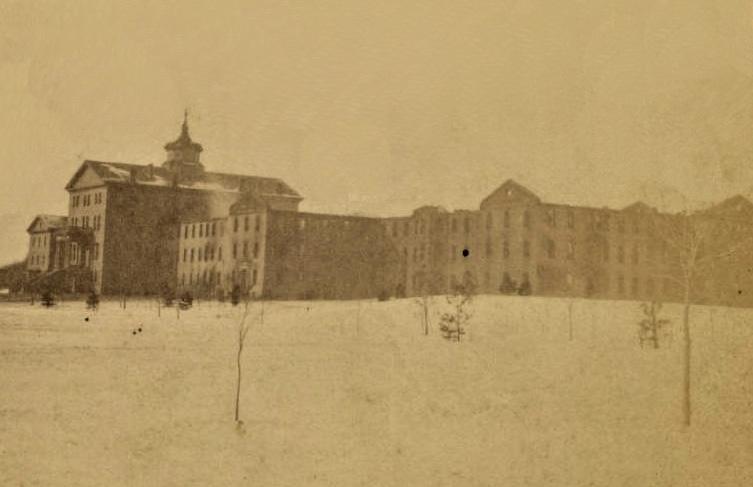
The men who had taken shelter in the barn were removed to provide space for the women. Most of those men were loaded into wagons and brought to St. Peter.
The article stated that the jail, the public schools, churches, private homes, and the Nicollet, Commercial, and Northwestern hotels were used to shelter them. Most, if not all, of these patients were brought back to the hospital about noon on the 16th.
The correspondent initially spoke with the hospital’s superintendent, Dr. C. K. Bartlett, and the hospital’s steward, G. W. Dryer. The correspondent went with Dryer to the top floor of a portion of the building that was not burning. From there, they could see that the interior of the North Wing was gutted entirely, but that the walls were still standing. Later inspection determined that the walls were sufficiently sturdy to use in the rebuilding process. Dryer said that he had seen a patient calmly sitting in one of the burning North Wing’s upper windows until the flames ultimately collapsed the brickwork beneath him.
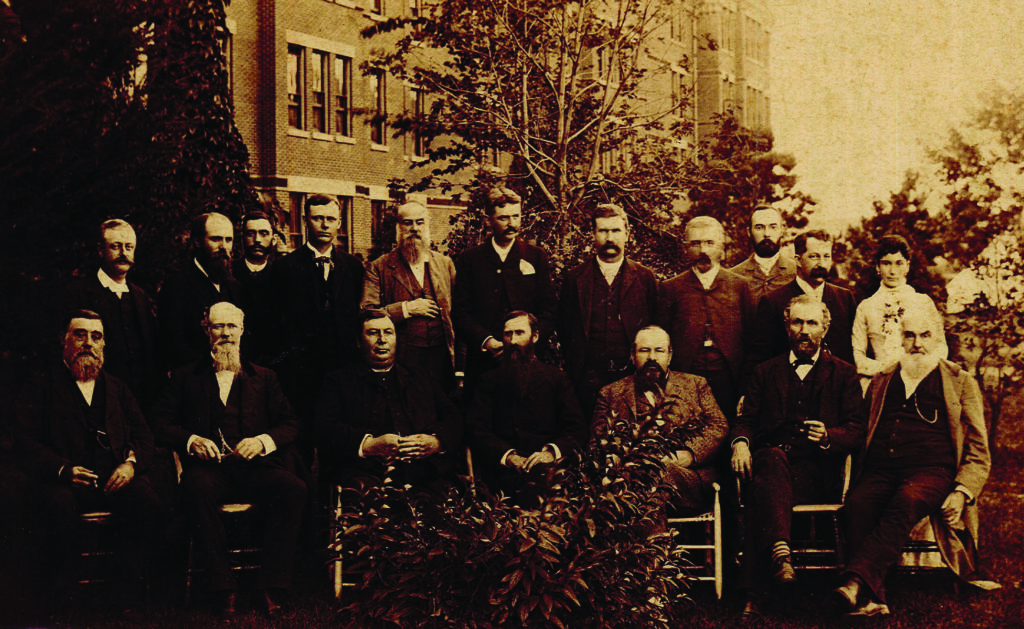
The patient fell backward into the flames. Later, Dryer told the correspondent that he estimated that the fire’s losses could total $300,000.
Once the patients were returned to the hospital building, the article’s author had a great deal to say about the patients he saw or met while he toured the wards. He noticed that most of the patients did not understand what had happened or what was happening while he was with them. There was no panic. The patients appeared to be relatively calm, going about their business as if there was nothing unusual about the situation.
Governor Pillsbury arrived to get a better understanding of the situation. Pillsbury indicated that reconstruction would begin as soon as possible. He added that “about 40 or more of the more tractable” patients would be brought to poor farms in Hennepin and Ramsey Counties and the hospital for the Insane in Rochester. The article mentioned the challenges that bringing patients from St. Peter to the three locations would mean for the staff members who worked at those places.
The poor farms needed extensive work to accommodate more people, and the Rochester hospital was not yet completed. Heating facilities still needed to be installed there. From what was written elsewhere in the article, it appears that the number of patients to be transferred to other facilities mentioned by the governor was only an initial estimate. Gov. Pillsbury even received an offer from the board members of Macalester College to provide temporary shelter for some hospital patients.
The fire was under control by 1:00 p.m. on the 16th. W. G. Gresham wrote in volume one of his History of Nicollet and LeSueur Counties, Minnesota, about the fire’s aftermath.
“After the conflagration was over, there were forty-four of the inmates missing; some were returned the next day; the remains of eighteen bodies were found in the ruins, seven died from effects of injuries, and six were never accounted for.
In 1881-2-3 the buildings were rebuilt, and every precaution taken to secure absolute safety from such a sad occurrence again. The origin of this fire has ever remained a mystery, as it commenced in a portion of the building where no fire was ever used for any purpose in carrying on the institution.”
It was a challenge to find the patients who had wandered off during the fire. One man made his way to Peter Brady’s house, five miles from the hospital. Brady later brought him into St. Peter and delivered him to the authorities. Two women wandered away and were found nearly frozen somewhere in Belgrade Township the next morning. They were taken to a nearby farmhouse, where they were cared for before they were returned to the hospital in the afternoon. Due to the hospital’s proximity to the Minnesota River, it was feared some patients might have reached the river and drowned there.
The North Wing, which was only a portion of the enormous hospital building, was successfully rebuilt. It was used for many years. Eventually, the wing and the rest of the building were demolished, leaving as a separate structure the portion in the very center.
The center building is still in use today.


